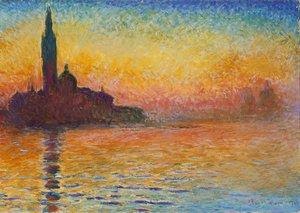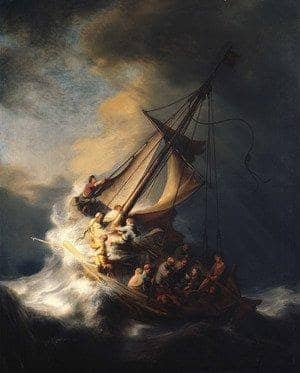
There’s much debate on the relationship between an artist and his work, and whether both should be seen under the same lens. Arguably each artist has one thing or the other that differentiates their art from others. These distinctions are often inconspicuous and one has to spend years studying art history to be able to accurately pinpoint every artist’s personalized edge.
However, there are some world-renowned artists whose work can be easily identified based on intricacies like style, subjects, and colors. In this article, we’ll study the art style of some famous painters and understand what makes their art distinguishable.
Leonardo Da Vinci

It’s often the first name that comes to mind when one talks about Renaissance art. A master artist, sculptor, architect, and engineer, Da Vinci made an unparalleled contribution to art history. The differentiating feature of his art style is the famous Sfumato, the blurring effect seen in many of his paintings.
Another distinguishing factor is the immaculate expressions of his subjects that seem to transcend reality, and yet look very life-like. Many of his artworks were inspired by important biblical incidents and influential figures of his time. Some of his greatest works include Mona Lisa and The Last Supper.
Pablo Picasso
Undoubtedly one of the most popular names in 20th-century art history, Picasso made revolutionary contributions to modern art. His style, shifting surprisingly throughout his career, indescribably influenced modern artists. The defining features of Picasso’s artworks were the popping colors and wacky depiction of subjects.
Picasso pioneered and popularized the modern-day artform ‘Cubism’ which is associated with interlocking geometrical shapes, planes, and collages. The uniqueness of Cubism lies in the fact that it allows every possible viewpoint of a subject at once. Picasso’s art was the benchmark for future pop artists who explored further into his style.
Van Gogh

One of the most iconic artists of the Post-Impressionism era, Van Gogh is the true example of what one would call a ‘troubled artist’. More than his artwork, his short life frequented by mental health struggles adds to the mystic image of the artist.
However, his contribution to Impressionist art exceeds the atrocities of his life. You can identify Van Gogh’s art from the distinct bold and dramatic brushstrokes of vibrant colors. It instilled a sense of motion in the artwork, as seen in paintings like ‘The Starry Night’. The artist also had a penchant for self-portraits and painted over 30 during his lifetime.
Monet

Claude Monet is yet another important figure of the impressionism art movement of the 19th century. The French artist was occupied with capturing fleeting perceptions of raw nature for the most part of his career.
The key features of his artworks were rapid loose brushstrokes that depicted light in a refreshing way. He often sought new and experimental ways to depict bold colors in his artworks. His style gave an entirely fresh perspective to abstract natural art, which was later followed by many popular artists to come.
Michelangelo
Michelangelo is a 15th-century leading figure of high Renaissance and Mannerism art movements. A painter, architect, and sculptor, Michelangelo pioneered the art technique known as Buon Fresco, which involves quick painting on plaster while it’s wet.
The artist used the technique to add fine details and clear outlines to his subject’s form, some defining features of his work. Michelangelo’s work is largely based on the human body, which he considered a physical representation of the soul. You can also see references to catholic scenes and Greek mythology in his works during the Renaissance period.
Rembrandt Van Rijn

This 18th-century Dutch golden age painter is known for his contribution to the Baroque art movement. Rembrandt strongly favored realism in his art, and thus many of his subjects are ordinary-looking. One distinctive feature of his artworks is the impressive use of light and texture to give emotional depth to his subjects. The painter also used printmaking to his advantage and incorporated Baroque in his etchings to make them widely accessible. He mainly painted portraits and also himself in iconic biblical and mythological scenes. His ability to capture powerful and natural moments of human existence cemented his status as one of the greatest art masters of his time.
William Adolphe Bouguereau

A celebrated French Academic painter of his time, Bouguereau is known for his mastery of beautiful figurative paintings of common folks. His art style was realistic and his work was largely based on the naturalist-influenced depiction of rural peasants and mythological and religious themes. His paintings are characterized by detailed intricacies of human anatomy, especially seen in his classical nudes. Some of his most praised artworks include Song of the Angels, The Elder Sister 1869, and The Shepherdess.
Conclusion
The best possible way to recognize artists by their art is an extensive study of all forms of art. The more closely you delve into the intricacies of paintings, the more you come to understand the artist’s natural style. While you can’t personally study the iconic works of famous artists, you can always get some impeccable reproductions of their paintings from https://www.1st-art-gallery.com/browse-by-artist.html. It will help you cherish fine details and quintessential styles of renowned art masters up close.






